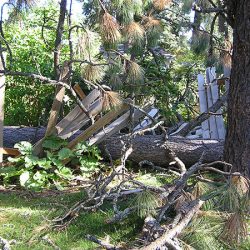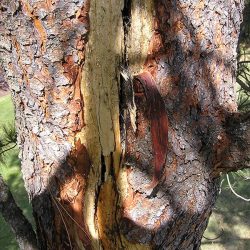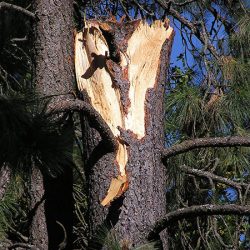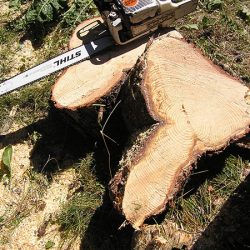16 May Windstorms of 2014 Part II
Brief Review:
Northern Idaho counties had 2 strong windstorms last summer. Each had winds sustained or gusting to 70+ mph (some localized areas exceeded this by quite a bit). The first, July 23rd, came mostly from the South. About 10 days later, another hit the Sandpoint area with prevailing wind directions from the WNW. We posted some pictures in our Skywalker Tree Care blog and Facebook page last fall with a promise to follow up with posts of ‘why they fail’ and ‘preventative measures’. Sooo, here we go…
Why do they fall down? A (mostly) picture story.
Well, obviously, BIG wind. Beyond that, why do some trees seem more susceptible to damage than others? I’ll list a few of the many reasons briefly to keep the boredom factor to a minimum, and then follow with pictures of failed trees (more fun!) and brief descriptions of the defects, if any, which led to failure.
- species: some are commonly known to be more susceptible to breaking
- shallow root systems, or root systems limited by natural or manmade barriers (big rocks, for instance)
- codominant stems
- weak branch unions, often with ‘included bark’
- pathogens, including: root rot, heart rot, white pine blister rust, western gall rust, and many others.
- lightening damage
- construction injuries
- dwarf mistletoe
- old and tired
- saturated root zones
- adjacent forest/trees recently removed
- etcetera…always lots of etceteras in our field
Now for the fun part…Enjoy!
Skywalker






